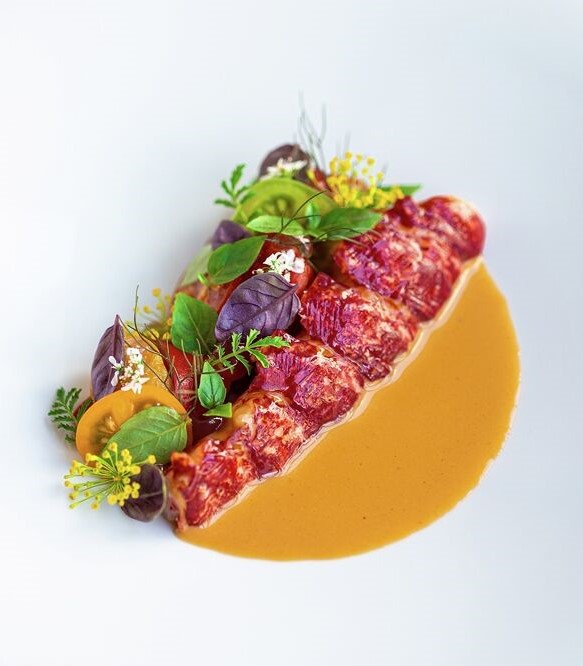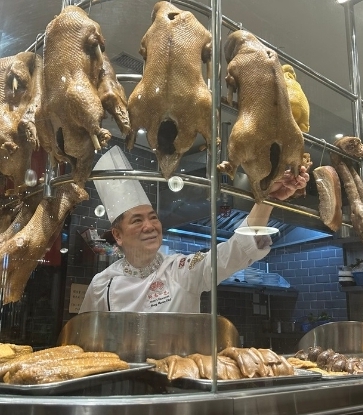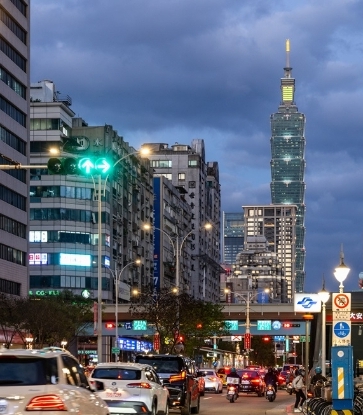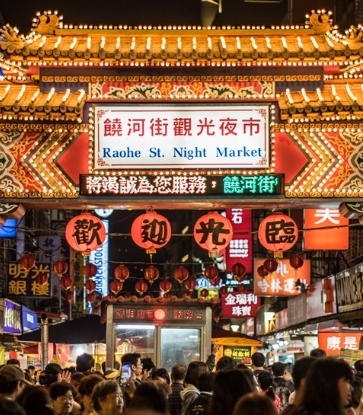Some eat to fill the belly; others eat to enjoy good tastes. But at No. 1 Food Theater Cuisine, one can sense the persistence of time. The restaurant is only two storeys tall, blending into the old apartment blocks and new towers in Bade Road. Its most recognisable feature might be the black roof at the entrance.

In 1944, when the Pacific War was about to conclude, the American army began bombing the area. It was also at that time the Japanese army built the one and only food storage facility in Taipei. The building is located in the neighbourhood of Zhonglun, the administrative centre of Taipei back then. It was later repurposed into a miscellaneous warehouse. About five to six years ago, a restorative project was initiated by Lead Jade Life & Culture to turn the site into a supermarket and a restaurant.
One can see how history plays a part in the form of the building’s architecture. It was constructed with two layers of wall to block the heat and moisture from outside coming into contact with the food inside.
The intriguing side of No. 1 Food Theater Cuisine is the way it reinterprets history through the menu and dishes. Sandra Lee, deputy general manager of the sales and marketing department of Lead Jade Life & Culture, told us the restaurant menu is like the annals of Taiwan, from the curry rice of the Japanese occupation period to the fried chicken brought in by the American army, from the mainland Chinese immigrants’ beef noodles to the Thai red curry introduced by the new wave of new settlers from South-east Asia. The dishes served in large, sharing portions also echo the wartime origin of the building.
“If you don’t know the history, you’d have no way to advance. History should be linked to contemporary life in some way to form a connection,” Lee said.

According to food expert and Lead Jade Life & Culture’s cultural consultant Hsu Zhong, its bestselling dish bone-in short rib noodles — priced at NT$800 (SGD$35, HKD$200) — tells the story of a bygone era, as well as those in power at that time. A whole piece of American short rib is used to reflect the influence of American food in the post-war period. Eating large chunks of meat is also a symbol of wealth. The beef broth is made from four entire days of simmering.
Food with condensed, intense flavours is the defining characteristic of the cuisine of the Yangtze River area, popular in Taiwan during the 1950s. The spicy Sichuan-style chilli sauce that goes with the noodles references the birthplace of Taiwanese beef noodles, Gangshan District in Kaohsiung, where Sichuan immigrants were commonly found.
Another selling point of the restaurant is its curious beverages, a showcase of the rising culture of mixology and coffee in Taiwan. South-east Asian tamarind, osmanthus from different Taiwanese regions, as well as Hong Kong-style preserved lemon are all incorporated into the cocktails and carbonated mocktails.
“’Blending’ is the spirit of Taiwan,” Hsu said.


It’s also worth checking out the Taiwanese ingredients employed in the dishes at No. 1 Food Theater Cuisine. For instance, Chihshang champion rice seafood risotto highlights the award-winning rice grown by farmer Lin Lung-hsing. It’s paired by wheat grains rarely used in Taiwan. Both types of grains are aromatic and springy, providing a foundation for Taiwanese white shrimp and scallop to show off their sweetness and umami. Chilli chicken soup adopts the chicken grown over a long period of
time at the village of Vogai in Nantou, as well as Gangshan’s pickled skinless chilli. These dishes are the best platform to promote these amazing Taiwanese ingredients to the public.
After receiving the Bib Gourmand recommendation, Lee told us many foreign tourists found the restaurant through The MICHELIN Guide and thus had the opportunity to get to know the food and agricultural products of Taiwan. “We discovered eating is a way to connect to Taiwanese culture. We hope to go further towards this direction and bring more quality Taiwanese ingredients to diners,” she noted.





















